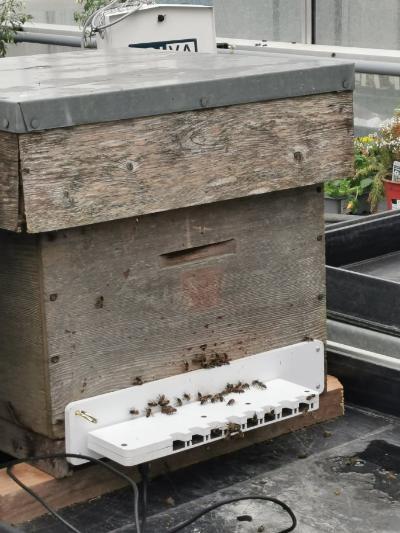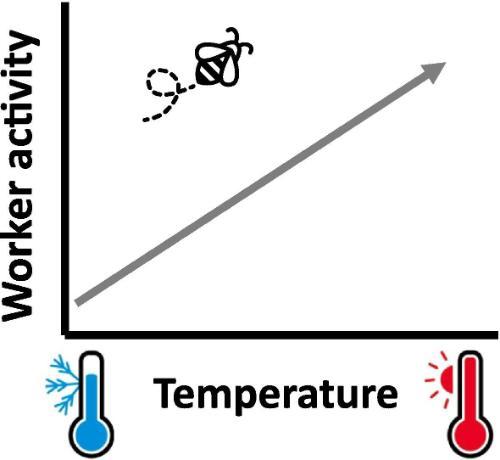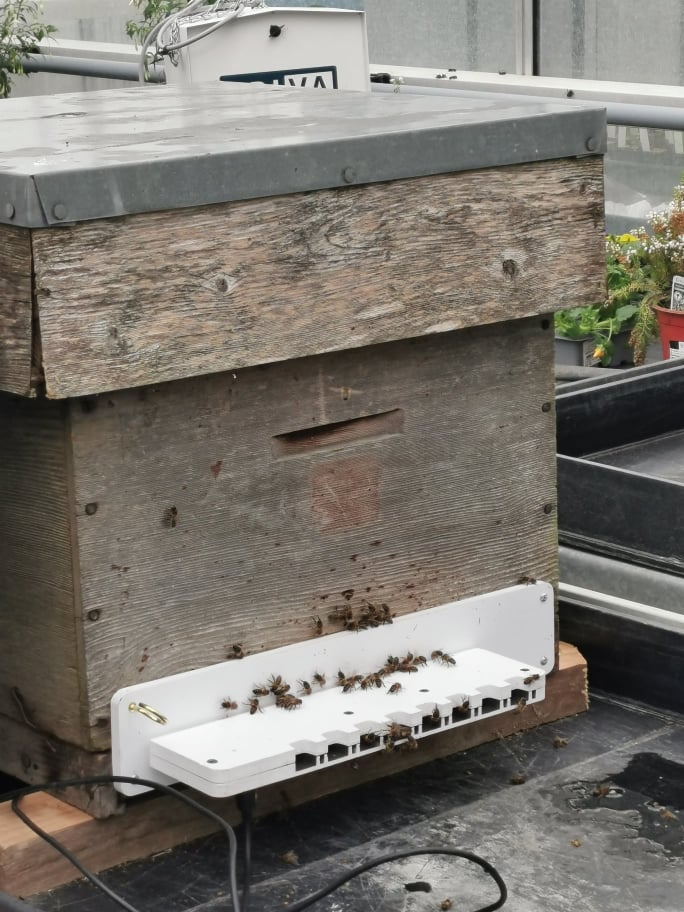UCD research shows how higher temperatures might impact Irish honey bees
The honey bee is a crucial pollinator for both crops and wild plants worldwide. They contribute significantly to global food production, but they face various threats like diseases, pesticides, and habitat loss. This has led to a situation where honey bee colony losses are 20-40% annually. As the effects of climate change begins to hit home, as rising temperatures and extreme weather events poses new challenges to honey bees.
 In a recent paper in the Journal of Insect Physiology, our research group in UCD SBES, led by Drs Darren O’Connell and Julia Jones, investigated how higher temperatures might impact Irish honey bees. To do this we placed honey bee colonies in temperature controlled glasshouses and exposed them to a range of higher temperatures that are predicted to be common in Ireland by the middle of this century under predicted climate change scenarios. To understand how they were impacted by higher temperatures, we measured their behaviour, how often workers left and entered the colony, and the internal colony temperature. It is extremely important for honey bees to maintain a constant internal hive temperature for raising the next generation of worker honey bees.
In a recent paper in the Journal of Insect Physiology, our research group in UCD SBES, led by Drs Darren O’Connell and Julia Jones, investigated how higher temperatures might impact Irish honey bees. To do this we placed honey bee colonies in temperature controlled glasshouses and exposed them to a range of higher temperatures that are predicted to be common in Ireland by the middle of this century under predicted climate change scenarios. To understand how they were impacted by higher temperatures, we measured their behaviour, how often workers left and entered the colony, and the internal colony temperature. It is extremely important for honey bees to maintain a constant internal hive temperature for raising the next generation of worker honey bees.
We found that honey bees showed an amazing capacity to keep the internal colony temperatures stable, even at higher glasshouse temperatures. However that was only possible with huge effort from the worker bees. At higher temperatures there was a massive increase in worker bee movement in and out of the hive. Worker bees regulate colony temperature in this way, by fanning air through the colony and collecting water to bring into the hive to cool it.

The relationship between glasshouse air temperature (°C) and worker movement (number of workers leaving the hive in 5-minute increments).
Honey bee colonies are complex societies with thousands of worker bees performing various tasks like brood rearing, foraging, and maintaining stable internal conditions. Diverting a large proportion of these workers to colony cooling behaviours is likely to be disruptive to long term colony health. At the later stages of the experiment this seemed to be the case, as colonies were less capable of keeping internal colony conditions stable.

Graphical abstract: Increasing temperatures led to increased worker movement, likely to assist with colony cooling activities.
The study highlights the importance of understanding how honey bees respond to temperature changes, especially as climate change becomes more severe. It shows that while bees can cope with certain temperature variations, prolonged exposure to extreme temperatures could disrupt colony activities and impact colony health. This underscores the need for continued research to protect these vital pollinators in a changing environment.
About the author
Dr Darren O’Connell is a Postdoctoral researcher in UCD School of Biology and Environmental Science. Darren’s work focuses on honey bee health, and on the ecology and evolution of solitary bees. Twitter: @Dar_Oconnell
Further information
O'Connell, D. P., Baker, B. M., Atauri, D., and Jones, J. C. (2024). Increasing temperature and time in glasshouses increases honey bee activity and affects internal brood conditions. Journal of Insect Physiology, 155, 104635. https://doi.org/10.1016/j.jinsphys.2024.104635

.jpg)
